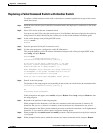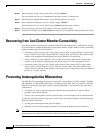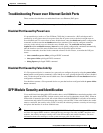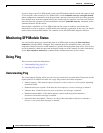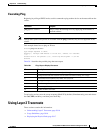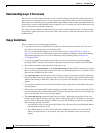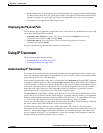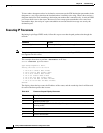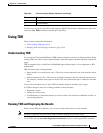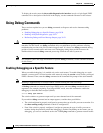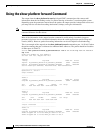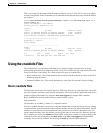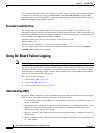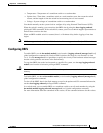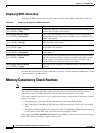
38-19
Catalyst 2960 and 2960-S Switch Software Configuration Guide
OL-8603-09
Chapter 38 Troubleshooting
Using TDR
To end a trace in progress, enter the escape sequence (Ctrl-^ X by default). Simultaneously press and
release the Ctrl, Shift, and 6 keys and then press the X key.
Using TDR
These sections contain this information:
• Understanding TDR, page 38-19
• Running TDR and Displaying the Results, page 38-19
Understanding TDR
You can use the Time Domain Reflector (TDR) feature to diagnose and resolve cabling problems. When
running TDR, a local device sends a signal through a cable and compares the reflected signal to the initial
signal.
TDR is supported only on 10/100 and 10/100/1000 copper Ethernet ports. It is not supported on SFP
module ports.
TDR can detect these cabling problems:
• Open, broken, or cut twisted-pair wires—The wires are not connected to the wires from the remote
device.
• Shorted twisted-pair wires—The wires are touching each other or the wires from the remote device.
For example, a shorted twisted pair can occur if one wire of the twisted pair is soldered to the other
wire.
If one of the twisted-pair wires is open, TDR can find the length at which the wire is open.
Use TDR to diagnose and resolve cabling problems in these situations:
• Replacing a switch
• Setting up a wiring closet
• Troubleshooting a connection between two devices when a link cannot be established or when it is
not operating properly
Running TDR and Displaying the Results
When you run TDR on an interface, you can run it on the stack master or a stack member.
Note Stacking is supported only on Catalyst 2960-S switches running the LAN base image.
To run TDR, enter the test cable-diagnostics tdr interface interface-id privileged EXEC command:
Q Source quench.
U Port unreachable.
Table 38-2 Traceroute Output Display Characters (continued)
Character Description



